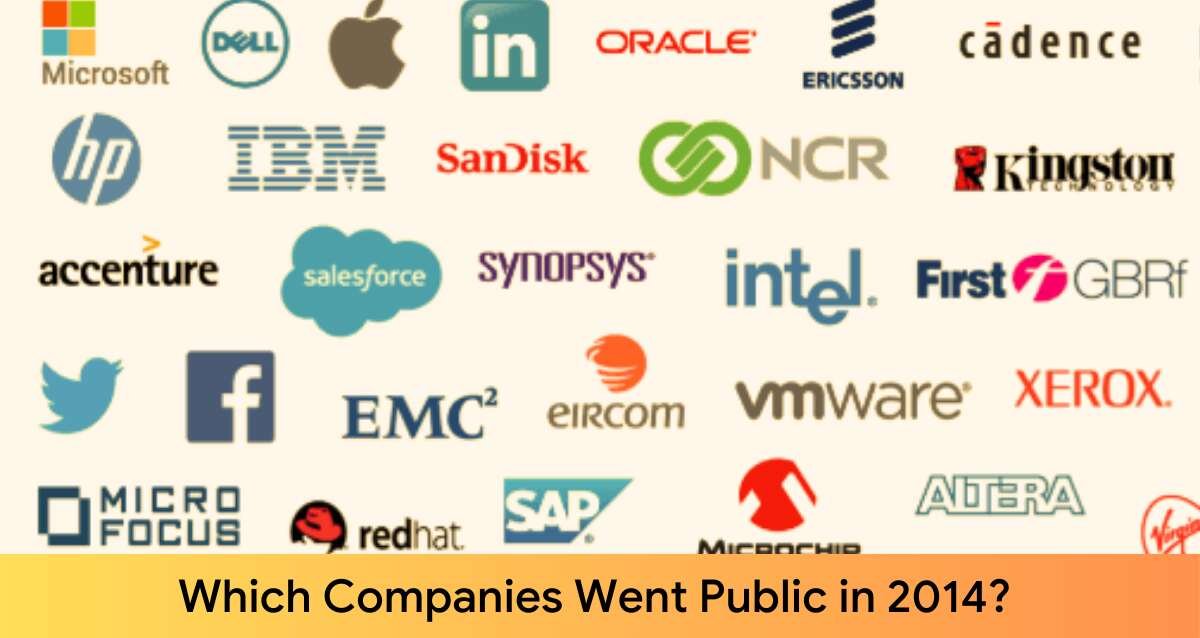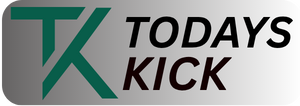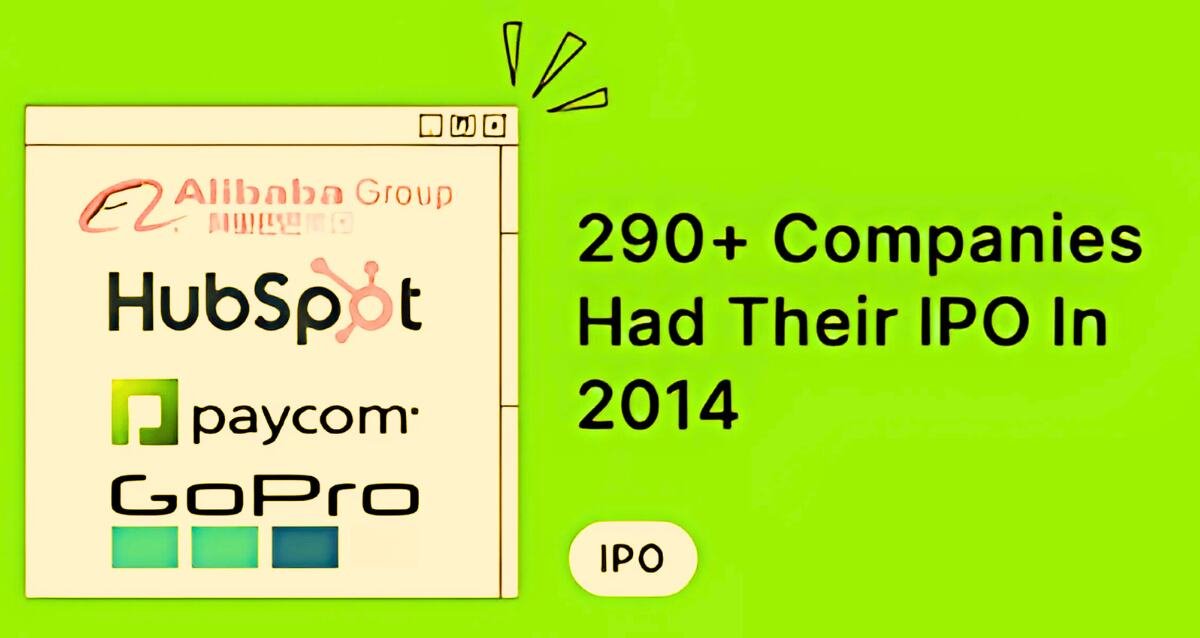In 2014, the IPO market, one of the most powerful companies of the decade, initially went public. Improved economic circumstances, more investor confidence, and a better regulatory environment helped IPOs, which had been flat for several years following the global financial crisis, show a notable comeback. 2014 was a pivotal year in the stock market as many companies seized the chance to reach public capital markets and advance their growth goals.
The success and difficulties of the Companies that had their IPOs in 2014 are closely reviewed in this article. The contrasting outcomes of public debuts were underscored by the fact that some businesses experienced significant success, while others suffered. Furthermore, the performance of these recent public firms and the stock markets was significantly influenced by substantial global events in 2014.
Significant World Events 2014 and Their Effects on Stock Markets
The two factors that affected the stock market were:
Geopolitical Conflict
Areas that were affected by geopolitical conflict:
- Russia-Ukraine Crisis
Invasion and Annexation: Russia invaded Crimea, a region belonging to Ukraine, then acquired it in February 2014. International censure and sanctions placed on Russia followed this.
- Market Impact: The crisis generated geopolitical uncertainty and raised investor risk aversion, therefore reducing global stock markets. The possibility for the dispute to become more intense and affect more general European stability, especially worried investors.
- ISIS’s Middle Eastern ascent
- Emergence as a Powerful Force: 2014 saw the Islamic State of Iraq and Syria (ISIS) acquire large territory in Iraq and Syria, therefore posing a serious security concern in the area.
- Market Impact: As ISIS grew, geopolitical tensions and worries about world terrorism escalated. This ambiguity changed investor mood and added to market volatility.
- West African Ebola Crisis
- Public Health Crisis: A significant public health crisis, the Ebola epidemic in West Africa in 2014 caused general anxiety and questions over world spread of the disease.
Although the Ebola epidemic had somewhat little direct economic effect, it helped to create a general uncertainty and risk avoidance that harmed stock markets.
Economic Considerations
- Declining Oil Costs
- Supply and Demand Dynamics: A notable drop in oil prices throughout 2014 resulted from rising oil output combined with declining worldwide demand.
- Market Impact: Stock markets had mixed results from declining oil prices. Lower energy costs helped industries like production and transportation, but they hurt energy companies.
- Quantitative Easing Tapering
The US central bank suggested tougher monetary policy in 2014 by reducing its quantitative easing (QE) program.
- Market Impact: QE’s reduction raised interest rates and recession fears. Especially in the second half of the year, this ambiguity added to market volatility.
- Worldwide Economic Slowdown
- weaker Economic Growth: In 2014 many big nations including China, Europe, and the United States had weaker economic growth.
- Market Impact: A possible recession raised investor worries about the worldwide economic crisis, which dropped stock market values.
For investors in 2014, these geopolitical conflicts and economic considerations combined to create a difficult environment. Stock market performance was substantially affected by the volatility and uncertainty these events produced.
Which Companies Went Public in 2014?

Here’s a look at some of the IPOs that took place in 2014 and how they are performing today.
1: Group Holding Limited Alibaba
Alibaba (BABA)
- IPO Date: Sept. 19, 2014
- IPO Price: $68
- Stock Price as of Sept. 26: $78.91
- Return Since IPO: +16%
Alibaba is often compared to Amazon. Due to its U.S. success and projected acquisitions, the e-commerce site went public on the New York Stock Exchange. Alibaba shares, like other e-commerce enterprises, reached over $300 during the pandemic. After surviving SEC and NYSE delisting this year, it’s barely above its IPO price on Sept. 26. Whether you purchased it at the IPO or later, Zacks gives the firm a value stock with a hold rating due to its growth history.
Lending Club (LC)
- IPO funding comes at $870 million.
- Providing a price of $15
- Share Value Opening: $23.43
- Share price as of right now: $26.94
By leveraging public markets, loan Club, the peer-to-peer loan marketplace, proved that 2014 is also the year of alternative finance pulling in around a billion dollars. Renaud Laplanche launched Lending Club in 2007; initially, it enabled peers to provide low-cost lending to one another, but it has evolved into a model wherein institutional investors may do the same.
Twitter Inc.
November 7, 2013, is the IPO day
The price is $26 a share.
Though Twitter went public a year ago, its influence persisted into 2014. Well-known for real-time interactions, the platform has struggled to sustain a steady user increase. Twitter also addressed debates about content control policies. Its future is still unknown in a social media environment becoming more competitive as it strives to improve ad income and provide fresh features.
GoPro Inc.’s (GPRO)
IPO date is June 25, 2014
The IPO price is $24
The stock price as of September 26 is $4.99
Return since IPO is -79%
GoPro Inc. went public for $24 per share in July 2014.
Unfortunately, the stock has fallen faster than a skier on black double diamond courses since then. However, new model prices may open new markets and help the producer identify a promising niche. GoPro’s new subscription model, which offers discounts, live streaming, and unlimited cloud storage, has impressed Wall Street investors.
GoPro became synonymous with action cameras. Despite early success, GoPro stopped as competition increased and standalone camera demand declined. Despite struggling to recover, the company has moved into drones and software. Investors watch GoPro’s innovation to reclaim its top spot.
Virgin America (VA)
Virgin America (VA) had a Nov. 13, 2014
The IPO price of $23
Its stock price as of Sept. 26 is N/A.
Return since IPO: Not stated
Virgin America Inc., a budget airline partly controlled by Richard Branson, went public on Nasdaq in 2014 for $23. The stock dropped below expectations after foreign investors bought 13.1 million shares. Branson retained 24.8% of the company after the IPO, while hedge fund Cyrus Capital Partners held 32.8%, Reuters said.
Alaska Air Group purchased Virgin America in 2016 for $2.6 billion. More than double the IPO price, Alaska Air Group paid Virgin America founders $57 per share.
Box Inc.
The IPO date is March 23, 2016
The price per share is $14.
Box started its trip in the erratic 2014 market even though it postponed its IPO until 2016. Focusing on business customers, Box seized on the market for cloud services. Collaborations with IT behemoths like Google and Microsoft have improved its products. Still, its expansion depends on security and compliance being very vital.
Grubhub (GRUB),
IPO Date: April 4, 2014
IPO Price: $26
Stock Price as of Sept. 26: N/A
No return since the IPO
Grubhub went public in April 2014 with great hopes after 10 years as a prominent meal-delivery company. Behind DoorDash, the corporation leads food delivery during the pandemic. Grid-wise estimates DoorDash will have 53% of the food delivery market in 2021 and Grubhub 21%. Only Eat Takeaway.com, Grubhub’s parent business, left the Nasdaq stock exchange in early 2022 to save costs and reduce management.
Zendesk (ZEN)
IPO: May 15, 2014
IPO Price: $9; Sept. 26
Stock Price: $75.70
Return Since IPO: +741%
Zendesk features stored in the cloud help desk management, customer support, CRM, and more. If you acquired Zendesk shares in 2014 and kept them, you may have a decent nest egg. Zendesk shares rose from $9 to $15.25 days after its IPO. Generally, it rose. Zendesk, worth over $75 a share as of Sept. 26, has consistently increased but is presently down with the S&P 500. Investors rank it “hold,” CNN Business reports.
TrueCar, or TRUE
IPO price: $9
Stock price on September 26: $1.61
Return since IPO: -82%.
TrueCar began connecting consumers with authorized US dealers of new and used vehicles in February 2005. The marketplace partners with Sam’s Club, American Express, and Navy Federal Credit Union’s auto-buying programs. The $9 IPO raised $70 million, less than expected. The stock hit $25 in September 2014 and is now $1.51, its 52-week low.
Synchrony Financial (SYF)
IPO Date: July 31, 2014
IPO Price: $23
Stock Price as of Sept. 26: $28.21
Return Since IPO: +23%
US private-label credit card behemoth Synchrony Financial. For $23, the company was listed on the NYSE in 2014. The company reached a record $52 per share in 2021, benefitting early investors. As of Sept. 26, the stock was under $30, reflecting the bear market. Yahoo Finance analysts like the company and set a $40 12-month goal. Rising interest rates and inflation boost credit card usage.
IPO Companies in 2014: An Industry Analysis
Companies that had their IPOs in 2014 with a lot of enterprises going public. These enterprises ranged from technology and healthcare to financial services and consumer goods. This study examines the 2014 IPO class’s primary industries.
Technologies
- Sector dominance: The IT industry dominated 2014 IPOs with a large percentage of listings.
The IT industry reflected emerging trends like cloud computing, mobile apps, and social networking.
Alibaba Group Holding Ltd., Box Inc., and GoPro Inc. were notable 2014 IPOs.
Medical Exam
- increased Demand: The healthcare sector’s innovation potential and increased demand for services drove IPO activity in 2014.
Biotechnology and Pharmaceuticals: Most healthcare IPOs were from biotechnology and pharmaceutical companies commercializing new drugs and devices.
- Aging Population: Chronic illnesses and an aging population boosted healthcare business growth and how to get fast IPOs.
Business Services
- Financial Crisis Recovery: In 2014, IPO activity rose as businesses recovered from the global financial crisis.
Banks and Insurance Companies: Most financial services IPOs were in banking and insurance as businesses sought funding and expanded.
- Regulatory Environment: The IPO market and the performance of recent public businesses suffered as the regulatory environment for financial services companies kept changing.
Consumer Items
- The wide spectrum of Companies: The consumer goods industry includes makers of consumer electronics, food, and beverage manufacturers, and stores among other businesses.
- E-commerce Growth: Companies looking to profit from the evolving consumer environment helped consumer goods IPOs become popular through e-commerce and online shopping.
Strong brand awareness and established market positions helped companies be more likely to be successful in their IPOs.
Geographic events influencing long-term outlook and market volatility
There are two types of market volatility and long-term trends:
Factors Influencing Market Volatility
- Geopolitical Events
- Global Uncertainty: Conflicts and geopolitics may cause investors to be unsure and risk-averse, hence generating market volatility. Wars, commercial conflicts, and political unrest are among the instances.
Negative geopolitics events may undermine investor confidence, which leads to asset selling off and search for safe havens.
- Case Study: Concerns about possible escalation and economic penalties drove major market volatility resulting from the Russian invasion of Ukraine in 2022.
- Economic Trends
- Economic statistics Releases: Market mood may be much changed by the publication of economic statistics such as GDP growth, inflation rates, and unemployment numbers.
- Market Expectations: Should economic data stray from market expectations, price swings might be very noticeable.
- Case Study: A sudden jump in inflation rates may cause anxiety about increasing interest rates, which would cause equities to sell off.
- News Particular to Companies
- Earnings releases: Particularly if they stray from analysts’ forecasts, earnings releases may generate significant market volatility. Announcements of mergers, acquisitions, or divestments may also affect stock values.
- Regulatory Changes: Variations in government rules may have a major effect on certain businesses and sectors, therefore influencing the market volatility.
Long-Term Trends
- Rising Interest Rates
Rising interest rates have the potential to cause bond prices to drop, therefore affecting the stock market.
- Cost of Borrowing: Higher interest rates can raise consumer and company borrowing costs, therefore slowing down possible economic growth.
- Case Study: Market volatility has resulted from the Federal Reserve’s slow rise in interest rates throughout recent years.
- Advancements in Technology
- Disturbance of Industries: New enterprises have chances thanks to technological developments while established sectors may be disrupted.
- Investment Possibilities: New technology development can provide appealing chances for investors.
- Case Study: The emergence of artificial intelligence and automation has brought about major changes in many sectors, therefore influencing the performance of stock markets.
- Regulatory Modifications
- Industry-Specific Regulations: Changes in regulations could have a big effect on certain sectors, therefore affecting the market volatility. Compliance with new rules could raise company expenses, therefore influencing profitability.
- Case Study: Stiffer environmental rules may affect connected businesses and energy corporations.
Investors who want to negotiate market volatility and make wise investment selections must first understand these elements and tendencies. A long-term perspective helps investors to position themselves for possible opportunities and reduce dangers.
Conclusion
Showcasing a range of sectors like technology, healthcare, and energy, the Companies that had their IPOs in 2014 had a major influence on the stock market. As businesses seized market circumstances to go public, these IPOs mirrored the economic patterns of that year. Anticipating great profits and long-term expansion, investors were eager to leverage the potential of these new competitors.
Companies that had their IPOs in 2014 showed investor confidence in developing industries and established standards for future offers. Their success over the years has been erratic; some have exceeded expectations while others have struggled. Researching the Companies that had their IPOs in 2014 offers insightful analysis of IPO patterns and market dynamics. In the context of evaluating risks and rewards in the IPO scene, this year remains the benchmark. The path of these Companies that had their IPOs in 2014 continues to shape the way fresh IPOs are set up and seen by investors as the market develops.
FAQ’s
Q1: Which sectors dominated 2014 IPOs?
Technology, healthcare, and energy were the top three 2014 IPO sectors.
Q2: How did the companies that had their IPOs in 2014 perform over time?
The performance has varied; some companies excelled, while others faced significant challenges in meeting investor expectations.
Q3: Why is 2014 considered an important year for IPOs?
Companies that had their IPOs in 2014 benefited from favorable market conditions, setting benchmarks for future IPO trends.
Q4: Are the companies that had their IPOs in 2014 still influential in today’s market?
Yes, many companies that had their IPOs in 2014 continue to impact their industries and the overall IPO landscape.
Thank you for exploring our Blog! For additional captivating content, feel free to explore the website.

